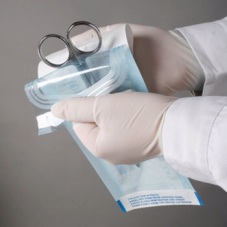Why is disinfection and sterilization of instruments and devices necessary?
Disinfection is very crucial and necessary in dentistry, why? I´ve mentioned before in my previous post that we are surrounded by many different bacteria and there are bacteria in our presence that are pathogenic which can cause various types of diseases. Sterilization is the main key in dentistry. It is a benefit for the patient and the dentist. It provides a hygienic and sterile atmosphere which provides a better health care service for the patient, which results as positive feedback for the physician.
Critical items that are used should be highly sterilized in order to avoid transmission of pathogenic bacteria. When instruments have been used, they must be sterilized. Before autoclaving the instruments, they should be washed with a brush underneath cold water in order to remove the debris on the instruments. Then being placed in a box filled with an antiseptic solution, leave it in there for a couple of minutes. After a couple of minutes, it is time to pack, load and store the instruments.
Packing: Once the instruments are dry and clean, they should be wrapped and placed in a sterilizing packet in order to place it in an autoclave.
Loading: This step includes the placement and the position of the sterilants materials. It is important to allow free circulation of steam in order for the instruments to be fully sterile. Remember to place small pieces of the instruments in a small basket and place the tray parallel to the shelf in the autoclave.
Storing: when the sterilizing packets are removed from the sterilizer, it is important to store them in a clean,sterile and safe place and they are ready to be utilised again.
It is not only the instruments and the devices that should be clean and sterilized, the dental chair should be clean as well. In order to keep a hygienic dental environment it is important to clean the dental chair and the surrounding with an antiseptic spray, this will generate a positive response from the patients and it will make them comfortable and safe in the hands of the dentist.
Here below are two videos about cleaning instruments and cleaning dental chair (source:http://blog.uchceu.es/odontologia/cleaning-disinfection-and-sterilization/)






